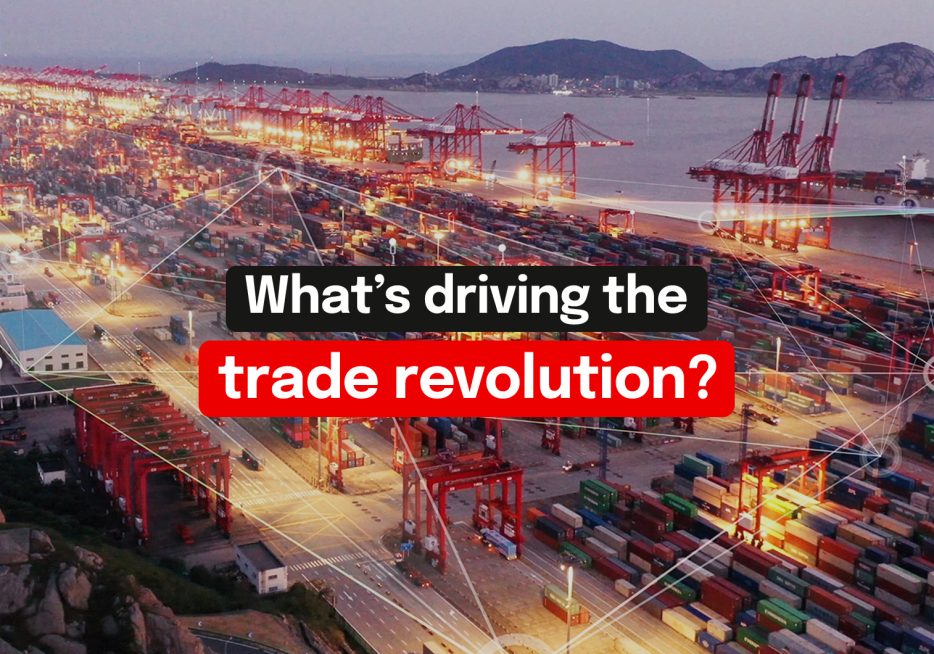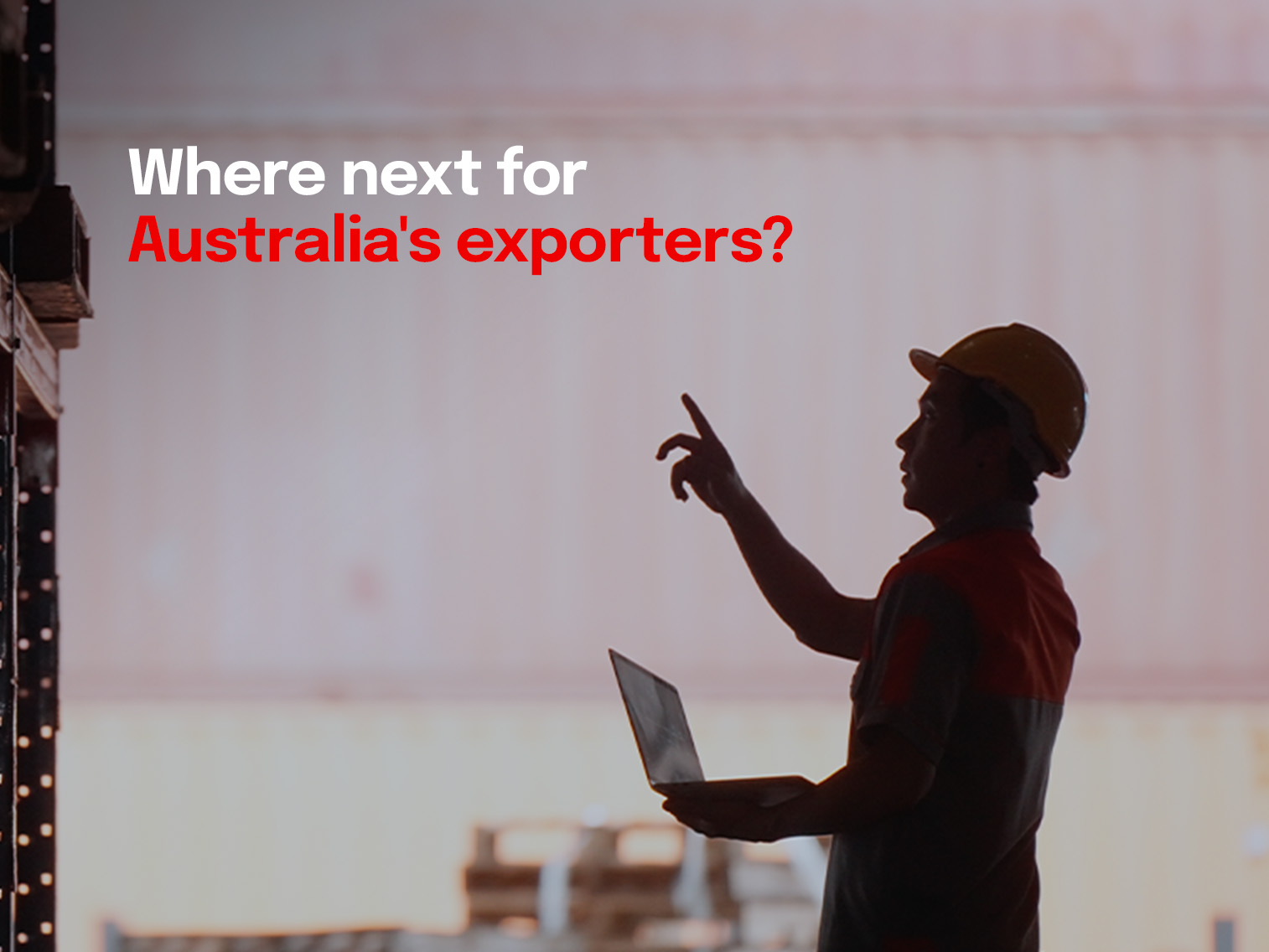Forced to think fast and smart, Australia’s importers and exporters have emerged from challenging times better placed to take advantage of increasing opportunity.


Across multiple sectors, Australian exporters are kicking goals. Now, as various pressures ease, we examine the strategies they’re using to get ahead.

Exports are vital to Australia’s economy – they’re worth over $500 billion a year and responsible for around a quarter of GDP. To find out what’s next for our exporters, NAB brought together three of our experts to discuss what innovative tools and techniques exporters are using to thrive now and adapt for the future.
Q&A participants
Julie Rynski: It’s fair to say it’s been a bit of a mixed bag for exporters these past few years. On one hand, there’s been the pandemic, choked supply chains and the jump in shipping costs, as well as geopolitical tensions making trading conditions tough. On the other, many are experiencing a boom – our own NAB data shows solid ongoing growth among our exporting customers. So how are exporters feeling about the future?
Jackie Cooper: We’re coming off some really great seasons for agricultural production and our customers expect this to continue. With the low exchange rate and stable currency there is an opportunity for exporters across other industries to diversify into new markets to grow revenue. Supply chain pressures are easing as well, and shipping costs are coming down, which is great news. While there are always going to be logistical challenges that arise when operating in the global market, overall, it’s a positive outlook for Australian exporters.
James Sheehan: The Australian dollar has been stable, which is good news for exporters as it allows them to be competitive in pricing against their peers. Add to this a good period of production and most exporters are confident they can weather some of the challenges, such as the Russia/Ukraine conflict causing volatility in prices for key commodities.
Outside of Australia’s largest agricultural and mineral exports, the outlook is also good for more bespoke exporters such as those in advanced manufacturing and those adding value to primary production. They are often more shielded from global events like Russia/Ukraine and are not as affected by the higher cost of international logistics because their products don’t take up as much shipping space as other commodities.
Julie: After the past few years, exporters know the road to profitability is never straightforward. So let’s discuss some of the challenges they’re facing – and more importantly, how they are overcoming them.
James: Resilience is a legacy of the past few years. When China put import tariffs on certain Australian goods a couple of years ago, barley exporters did a solid job of pivoting to other markets. So now most exporters are continuing down this path of diversification – exporting to multiple countries and multiple suppliers within a country.
As Australian companies diversify their suppliers and markets and deal with companies where they do not have a long track record, there is obviously some nervousness until a relationship can be developed. This has led to renewed interest from both importers and exporters in international payment risk protection products like letters of credit and documentary collections.
These more formalised payment arrangements also address some of the concern over the financial standing of their foreign counterparties and the potential for the foreign company to repudiate their contract or collapse financially before the conclusion of the contract.
Julie: We’ve seen a big focus on environmental, social and governance (ESG) recently. How is this affecting exporters and how are they adapting their business models in response?
Jackie: Exporters can charge a premium if they can appeal to those conscious consumers who want to know where their goods are coming from. For example, we see our manufacturers and agribusiness customers demonstrating sustainable practices with traceability across their value chain, or those that upgrade their fleet to electric vehicles, not only because it’s a good thing to do, but because it can also make economic sense.
When it comes to exporting and international trade, there is a heightened focus on the governance aspect of ESG. Exporters and importers must comply with the various sanction obligations enforced by Australia and by other countries with which we trade.
It is now an expectation that companies will know how, where and by whom the products they are buying have been manufactured, as well as to whom they are selling their products and for what purpose the buyer is acquiring them. Both are tightly associated with ESG and NAB is helping to address this issue through more onerous sanction screening processes.
James: In terms of the environmental component of ESG, if you can say to a customer in Asia wanting to buy Australian meat, ‘This was grown on an open range farm in a specific location in any part of Australia’, then it demonstrates quality. Even better if you can use agtech to track where the livestock’s been and how they’ve been treated.
Julie: We might be seeing a positive outlook, but there’s always going to be a certain degree of risk involved in sending goods around the world – whether that’s inter-country conflicts, volatility in currency and commodities, or another vessel being grounded in a major shipping lane. What advice do you have on how exporters can manage these risks to protect their profitability?
James: They absolutely must consistently manage fluctuations in currency and commodity prices. The ones we see doing it best have a stable policy – whether that’s using various forms of hedging and market orders, as long as their strategy is consistent.
Fraud is another big issue exporters should be aware of. We’re all aware that cybercrime is on the rise, but this is heightened when you’re sending or receiving goods from overseas. The fraud we see here can be quite sophisticated; for example, payment redirection scams where criminals use fraudulent means to insert themselves into a transaction between an exporter and buyer to trick the exporter into redirecting payment to a fake account.
Beyond that, many of our customers value the insights NAB provides to keep them informed on market fluctuations. There’s plenty of information available on everything from economic conditions to commodity prices, and in formats that can be digested quickly and easily. NAB produces written summaries, podcasts and many more essential insights and tools to help exporters get ahead. You’ll find these at nab.com.au/insights
Jackie: Talk to your business banker and see how they can either help or introduce you to a trade and working capital or foreign exchange specialist in your area. They might be able to arrange export finance to support sales to new or existing exports or even to local domestic markets. They can also help arrange letters of credit with new trading partners to negate some of that counterparty risk. You’ve got nothing to lose by having a chat with them, even if it is just to understand what they are seeing in the market.
Julie: I couldn’t agree more. Thanks Jackie and James, it’s been a pleasure talking to you today and so fantastic to be supporting so many Australian export success stories among our customer base.
© National Australia Bank Limited. ABN 12 004 044 937 AFSL and Australian Credit Licence 230686.